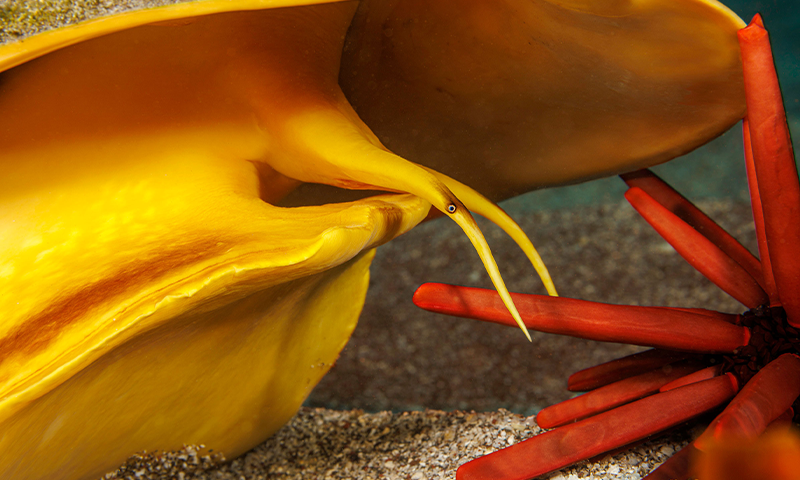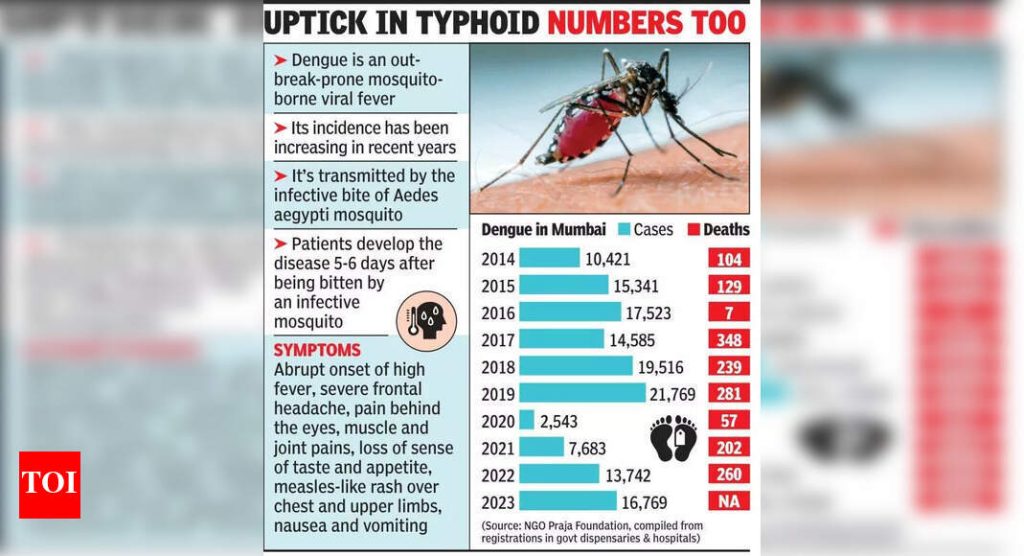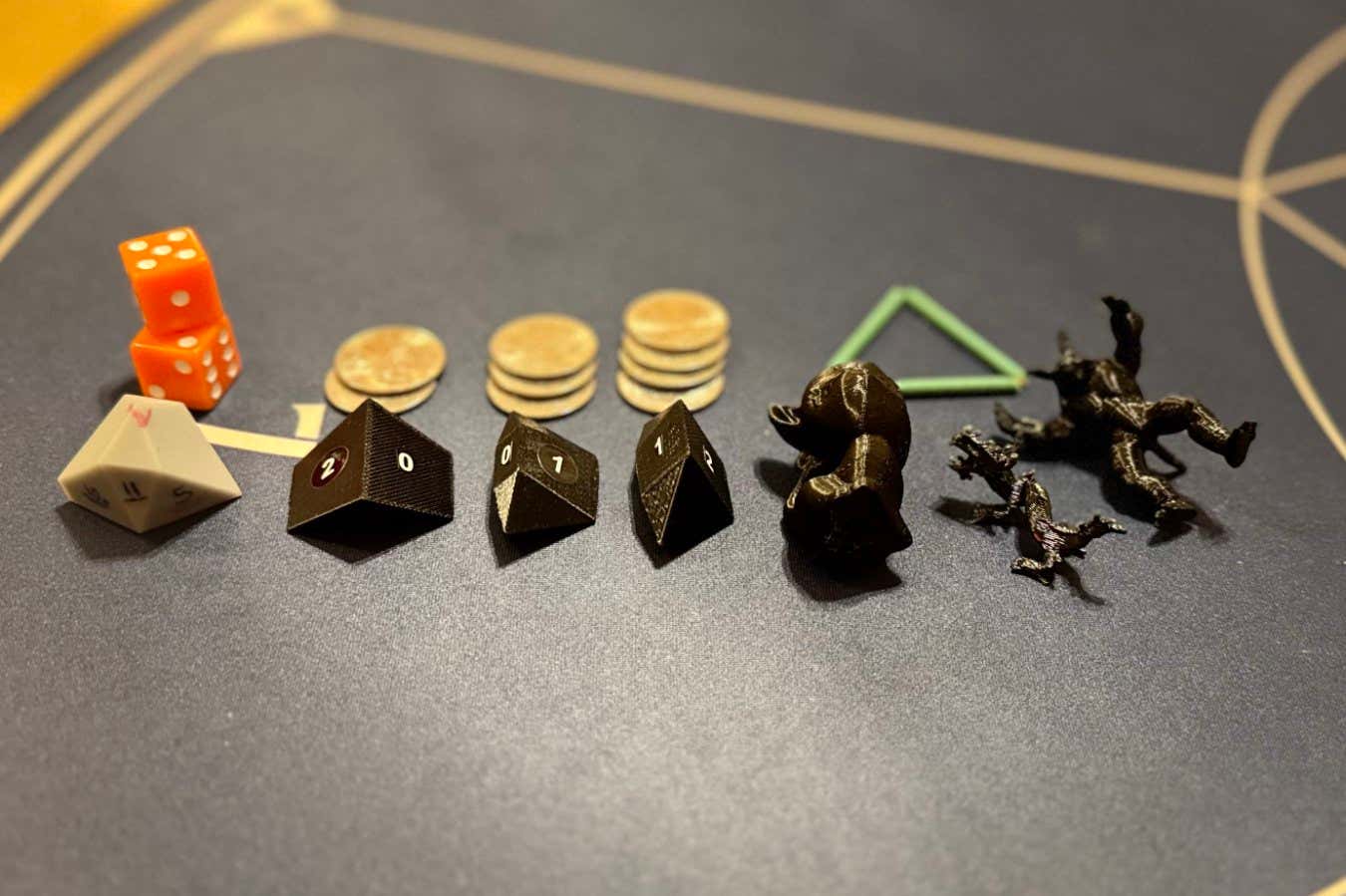Now Reading: Slow-Speed, High-Stakes Chase
-
01
Slow-Speed, High-Stakes Chase
Slow-Speed, High-Stakes Chase

The full Nautilus archive
•
eBooks & Special Editions
•
Ad-free reading
- The full Nautilus archive
- eBooks & Special Editions
- Ad-free reading

Across the sandy seafloor off the coast of Hawaii, a high-speed chase unfolds—or at least, what amounts to high speed for an echinoderm and a gastropod. The prey, a red pencil urchin (Heterocentrotus mamillatus), is ready for battle with its coat of thick spines. The predator, a type of sea snail known as a horned helmet (Cassis cornuta), carries its own armor: a helmet-shaped shell that protects the mushy mollusk within.
The snail glides along the seafloor with deadly precision. The urchin tries to flee. Sea urchins usually move slowly and unpredictably—a jiggle to the left here, a creep to the right there, scraping up algae as they go. But research shows that an urchin’s rudimentary sensory system can “smell” the chemical signals of an approaching predator. After a whiff of sea snail, some urchin species will make a beeline for safety, revving their speed from 3 inches per minute to just shy of 6 inches per minute.
“Both creatures are typically slow moving,” says David Fleetham, who photographed this pair off the island of Maui. “But what first caught my attention was the unusual sight of them seemingly racing across the sandy bottom.”
After a whiff of sea snail, some urchin species will make a beeline for safety
Unfortunately for red pencil urchins, which are about the size of a baseball, neither their spines nor their speed offers adequate protection against horned helmets, which can grow as big as a basketball. When the horned helmet gets close enough to strike, it rears up like a horse and slams down on its prey, then sinks its radula—an appendage that’s half tongue, half drill bit—through the urchin’s shell to reach the soft body within. Toxins quickly paralyze the urchin, and the snail then engulfs its meal, using its radula to suck out the soft bits and leave the spines behind.
“I often noticed piles of pencil urchin spines on the reef,” says Fleetham, “and now I finally understand their origin.”
Horned helmets have also been known to chomp down on sea stars known as crown-of-thorns (Acanthaster planci), a coral-eating creature covered in venomous spines. An overabundance of these native sea stars threatens coral reefs across the Indo-Pacific, and some nations within the region prohibit people from harvesting horned helmets in hopes of keeping sea star populations in balance. But humans with a hankering for the mollusk’s meat or its beautiful shell regularly flout the law, selling horned helmets in public markets or souvenir shops in places like the Philippines and Indonesia.
Whether such activities hurt overall populations of the snails isn’t clear. What is certain is that horned helmets’ predilection for prickly prey plays an important role in keeping shallow, tropical marine ecosystems running as smoothly as a well-oiled engine in a high-speed chase. Or, in this case, a slow-speed one. ![]()
This story originally appeared in bioGraphic, an independent magazine about nature and regeneration powered by the California Academy of Sciences.
David Fleetham is one of the most published underwater photographers in the world, with more than 200 magazine covers to date. His award-winning work has been displayed in museums around the globe. Fleetham began diving and photographing underwater in 1976, first in the cold, rich waters of British Columbia, and since 1986, in Hawaii. He is a founding member of The Ocean Artists Society.
-
Krista Langlois
Posted on
A longtime freelance journalist and contributing editor, Krista Langlois is now a senior features editor at bioGraphic. From her home in southwest Colorado, she writes about the intersection of people and nature for publications like Adventure Journal, The Atlantic, Hakai, National Geographic News, Outside, and Smithsonian.






















